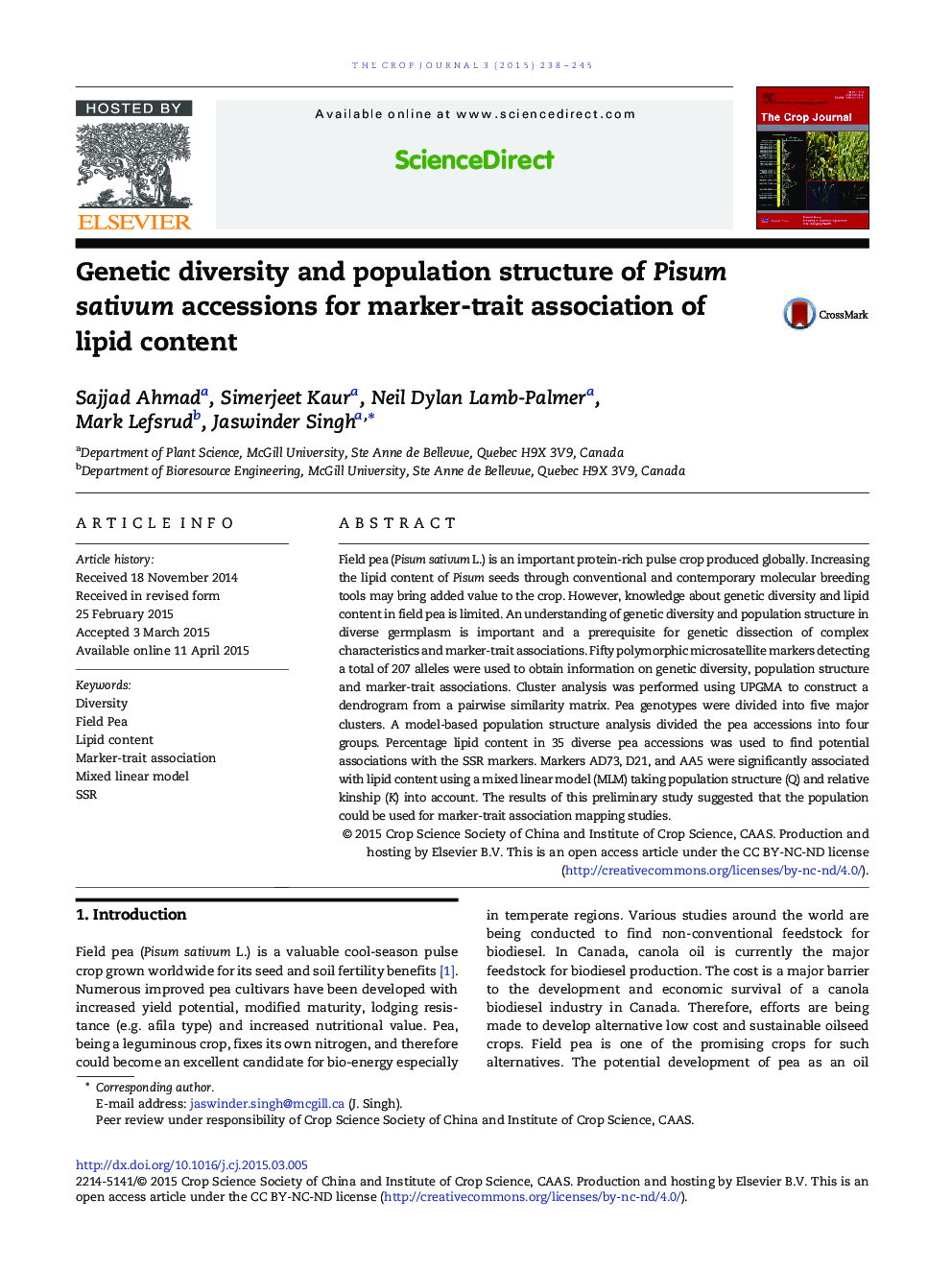| Article ID | Journal | Published Year | Pages | File Type |
|---|---|---|---|---|
| 2079587 | The Crop Journal | 2015 | 8 Pages |
Field pea (Pisum sativum L.) is an important protein-rich pulse crop produced globally. Increasing the lipid content of Pisum seeds through conventional and contemporary molecular breeding tools may bring added value to the crop. However, knowledge about genetic diversity and lipid content in field pea is limited. An understanding of genetic diversity and population structure in diverse germplasm is important and a prerequisite for genetic dissection of complex characteristics and marker-trait associations. Fifty polymorphic microsatellite markers detecting a total of 207 alleles were used to obtain information on genetic diversity, population structure and marker-trait associations. Cluster analysis was performed using UPGMA to construct a dendrogram from a pairwise similarity matrix. Pea genotypes were divided into five major clusters. A model-based population structure analysis divided the pea accessions into four groups. Percentage lipid content in 35 diverse pea accessions was used to find potential associations with the SSR markers. Markers AD73, D21, and AA5 were significantly associated with lipid content using a mixed linear model (MLM) taking population structure (Q) and relative kinship (K) into account. The results of this preliminary study suggested that the population could be used for marker-trait association mapping studies.
